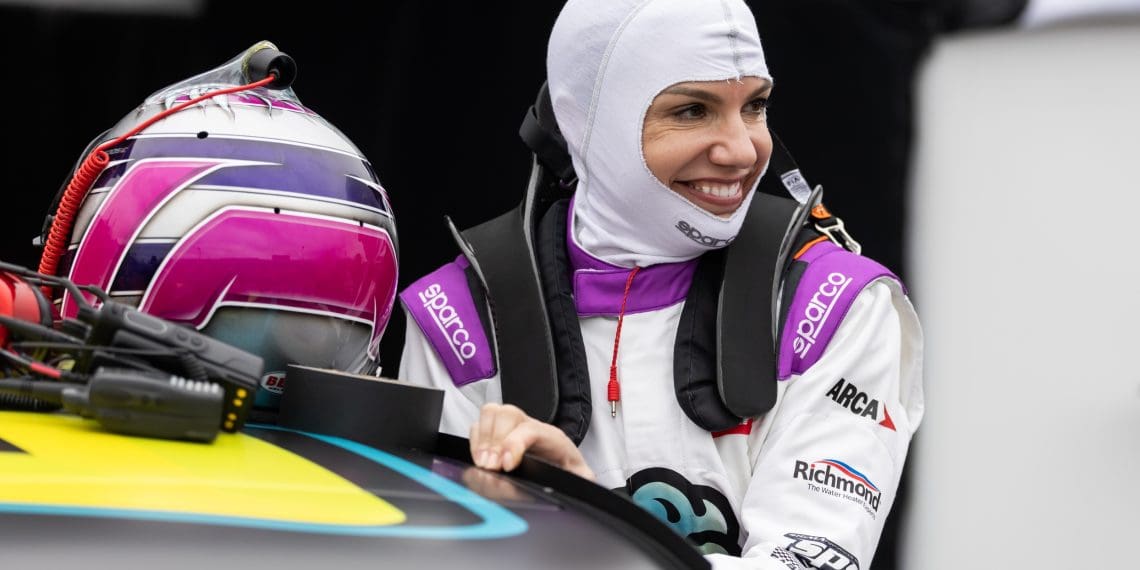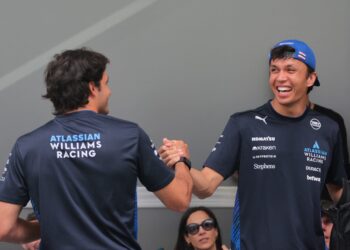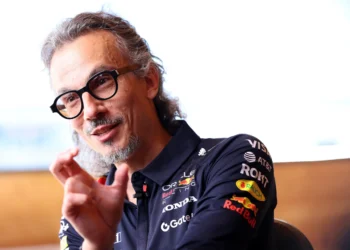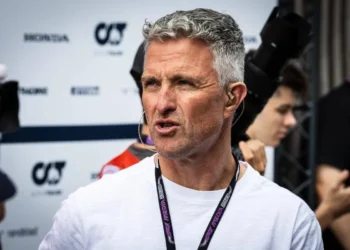The high-octane world of NASCAR’s Cup Series serves as a reality check for even the most seasoned racers. The transition from sports car and open-wheel racing to the gritty, aggressive environment of NASCAR is often a rude awakening, as racing veteran Katherine Legge discovered.
Legge, whose extensive resume spans various types of motorsports, was unprepared for the fierce competition and intense speed of NASCAR’s Cup Series. Even though she had competed on some of the world’s fastest tracks, she found that mental agility and strategic prowess were more valuable than raw speed in this new environment.
In a recent podcast, Legge shared her experiences, describing NASCAR as a “different world” entirely. Despite her proficiency in handling high-speed vehicles with significant downforce, she found that her skills didn’t seamlessly transition to the world of stock car racing. The adaptation to the weight, the aggression, and the unique characteristics of the Next Gen car proved more challenging than she had anticipated.
Rejecting the suggestion that experience in Xfinity races could have prepared her better, Legge emphasized that the Cup car’s independent rear suspension, aero balance, and braking system were vastly different. To her, the Cup car was a beast of its own. In her own words, “I’m sorry, but the Xfinity car does not drive like the Cup car.”
In the Cup Series, respect is something earned, not given, and every driver is constantly pushing their limits. As Legge observed, “They all seem to crash into each other a lot. I just think everybody is on the edge, and I think they will have to develop this mutual respect for each other.”
The experiences of elite drivers like Kimi Räikkönen and Jenson Button further underscore the challenges inherent in the transition to NASCAR. Despite their exceptional backgrounds, they found the unpredictability and aggressive nature of stock car racing to be formidable obstacles.
Räikkönen noted how quickly fortunes can change on the NASCAR track, saying, “You can be in a great position one moment, then three corners later, someone’s going the wrong direction, and your race is ruined.”
NASCAR drivers, renowned for their versatility, must excel in a variety of settings, unlike F1 and IndyCar racers who specialize in specific formats. One week, they could be navigating through the fast-paced Daytona chess match, and the next, they could be wrestling big stock cars through the dirt at Bristol or maneuvering them through the tight bends of Martinsville.
Kevin Harvick, a seasoned NASCAR driver, once pointed out this unique aspect of NASCAR, saying, “A lot of people don’t realize that in our world, you have to be good at everything. You can’t just specialize in one type of racing.”
It’s this constant adaptation that makes NASCAR a formidable battlefield. Even seasoned driver Denny Hamlin, a three-time Daytona 500 winner, has found the Next Gen vehicle unpredictable. As he put it, “The margin for error is smaller than it’s ever been. You can be elite one season and mid-pack the next.”
In conclusion, NASCAR’s Cup Series is far from being just another racing series. With grueling three-hour races that demand endurance, aggression, and rapid adaptation, it presents a unique challenge that sets it apart from other racing series. The experiences of drivers like Button, Räikkönen, Larson, Hamlin, and Legge are a testament to the fact that the Cup Series is not just highly competitive, but also one of the most demanding testing grounds in racing.













